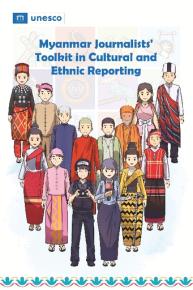Publication
Punish the crime, not the truth
Collation : 14 pages; illustrations

The Director-General’s Report on the Safety of Journalists and the Danger of Impunity is a unique biannual monitoring mechanism mandated by the 39 Member States of the International Programme for the Development of Communication and is accompanied by a laid-out Highlights Brochure.
In 2016-2017, a journalist was killed every four days.
In the 2016-2017 biennium, the total number of victims reached 182, with killings taking place in every region. These deaths shine a light on the extreme risks that can be faced by the individuals in this profession.
Some of these fatal attacks occurred in countries previously unaffected by such extreme acts of violence against journalists. However, not all regions were affected to the same degree. In 2017, the largest number of killings took place in the Asia and the Pacific region (34% of all killings), while in 2016, the largest number of killings occurred in the Arab States (31%).
An increase in the number of journalists killed outside of armed conflict zones can be noted in the last few years, with a majority of journalists (55%) in 2017 killed in countries not experiencing armed conflict. Many of these journalists were reporting on topics related to corruption, trafficking, and political wrongdoing. In line with observations of previous years, local journalists remain the vast majority among victims.
A rise in the percentage of women journalists among those killed in 2017 (14%) marks the continuation of a trend that has become apparent over the last couple of years. However, while the proportion of women among fatalities has risen, a clear majority of killed journalists are men.
Impunity for these crimes remains a key challenge. Out of the 1,010 killings recorded by UNESCO in the last 12 years, only 115 were followed by a judicial procedure that led to the conviction of one or multiple perpetrators. This means that 89% of cases remain unresolved. Impunity for crimes against journalists emboldens attackers and leads to self-censorship in the profession and among the public.

International Day to End Impunity for Crimes against Journalists 2018
Every two years, the awareness raising campaign for the International Day to End Impunity for Crimes against Journalists coincides with the findings of the Director-General’s Report on the current state of global and regional impunity. This year two social media campaigns were carried out. Check out the multimedia and social media campaigns below.
Visual Identity
You can download the visual identity packs of the #TruthNeverDies social media campaign. The packs are available in: English, French, Spanish and Arabic.
You can also download the visual identity packs for the #ENDimpunity and #journosafe social media campaign. The packs are available in: English, French, Spanish and Arabic.

Punish the crime, not the truth









